Laptops attract different types of bugs over the years. Traces of food, the warmth of the components, and even lights in or on the laptop can attract certain bugs.
The environment of a laptop is also important as many of the bugs in the room can make their way inside the computer. Most bugs in a laptop or a computer are tiny and might not be visible to the naked eye.
Table of Contents
Why Are Bugs in My Laptop or Computer?
Every bug needs food to survive. A new laptop without food traces in the keyboard may be host to bugs without you even knowing it. Here’s what attracts bugs in your laptop or computer.
- Dust
Dust creates the environment some bugs thrive in. Species such as dust mites are even known to eat dust. However, they eat skin cells that attract dust and not raw dust.
Dead skin cells on the keyboard with dust particles attract many types of bugs such as dust mites.
- Heat
The heat inside the computer or in the laptop is sufficient to attract different bugs and insects. Cockroaches are among the species which favor warm areas for their nest.
- Light
Lights in desktop computers or laptops attract different bugs and flies. Most laptops have small LED lights on the case but others can have ambient light inside, just like desktop computers.
These lights can attract bugs and these bugs mays stick around the computer if there are food traces for them to feed on.
- Mold
A room with mold exposes your computer to mold as well. Mold mites can settle in your laptop if there’s mold inside.
This can happen even before seeing visible mold on the laptop.
11 Bugs in Your Laptop and Computer
Some of the following species might be living on your laptop or your computer.
1. Mold Mites
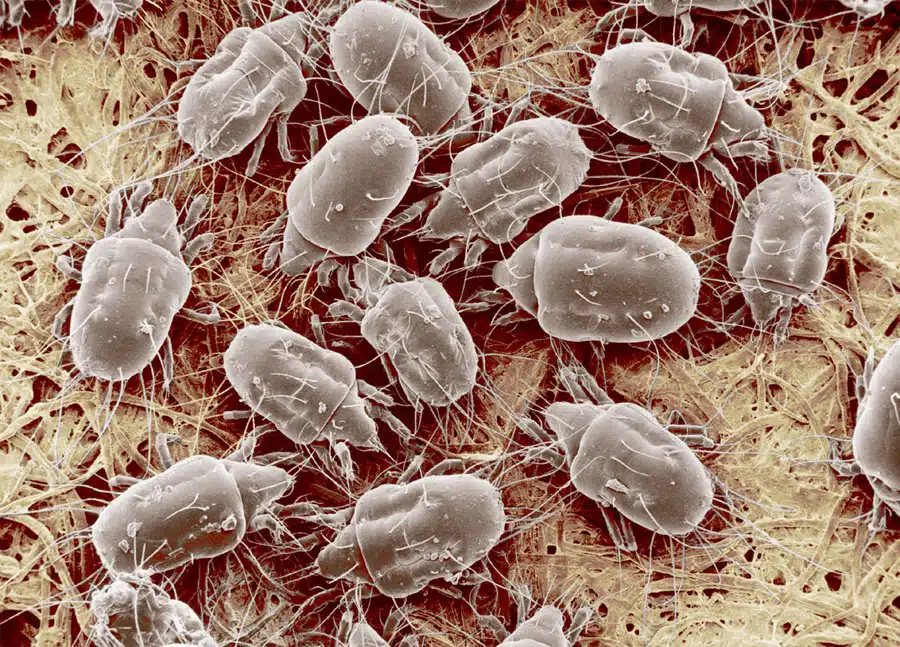
Mold mites are some of the most common and dangerous types of mites in your laptop.
So small they can’t be seen, these types of mites attach to mold. Various types of mites are characterized by the type of organic matter they attach to.
Mold mites attach themselves to mold. For mold to exist in a laptop or a desktop computer, it already has to exist in the room or the house.
Mold forms in areas with poor ventilation and high humidity. At first, it cannot be spotted. But it then becomes green and dark, as a form of organic material.
This organic buildup serves as food for mold mites and getting rid of them is possible by getting rid of mild.
2. Spider Mites
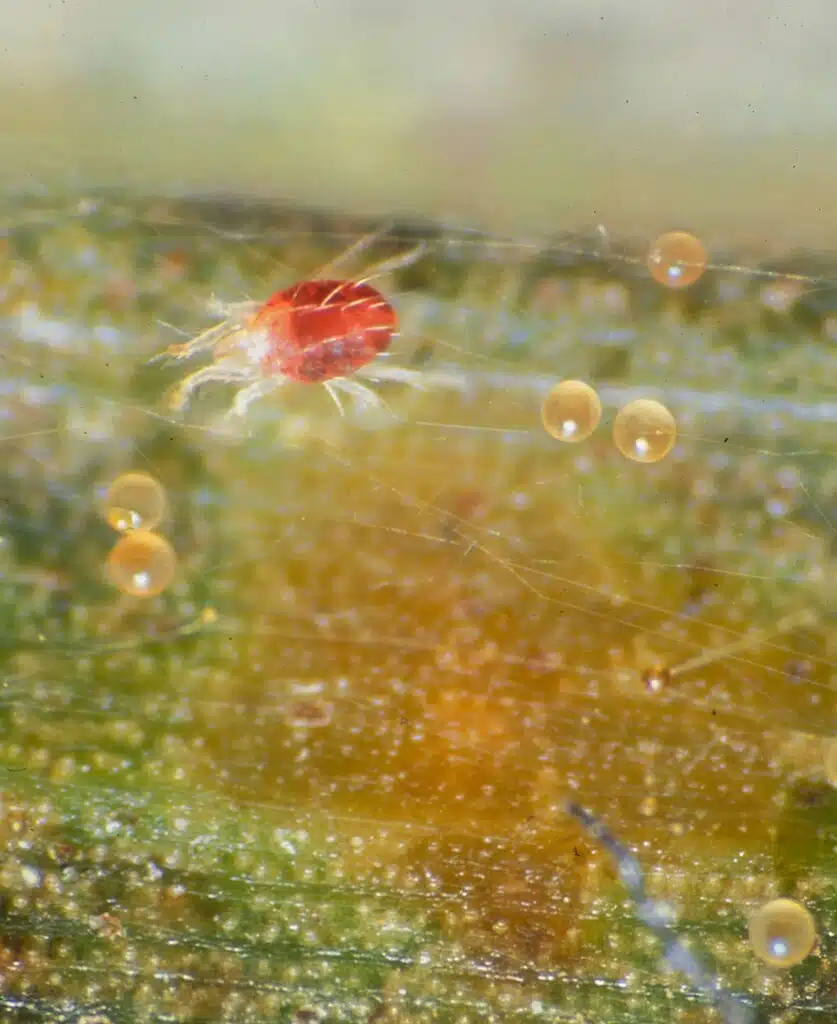
Spider mites are a type of small bug that may end up in your laptop by accident.
This is also a small species as spider mites have an average size of just 0.04 inches.
A small bug with a red body, this species is also dependent on food to survive indoors, just like mold mites.
Still, unlike mold mites, spider mites only require a plant, typically a potted plant to live indoors. It can then easily make its way into laptops.
Spider mites can be red, black, or white, You can inspect plants in your office or around the house for these bugs.
They might live on the underside of leaves, so it’s worth thoroughly analyzing plants to find their source.
3. Bird Mites
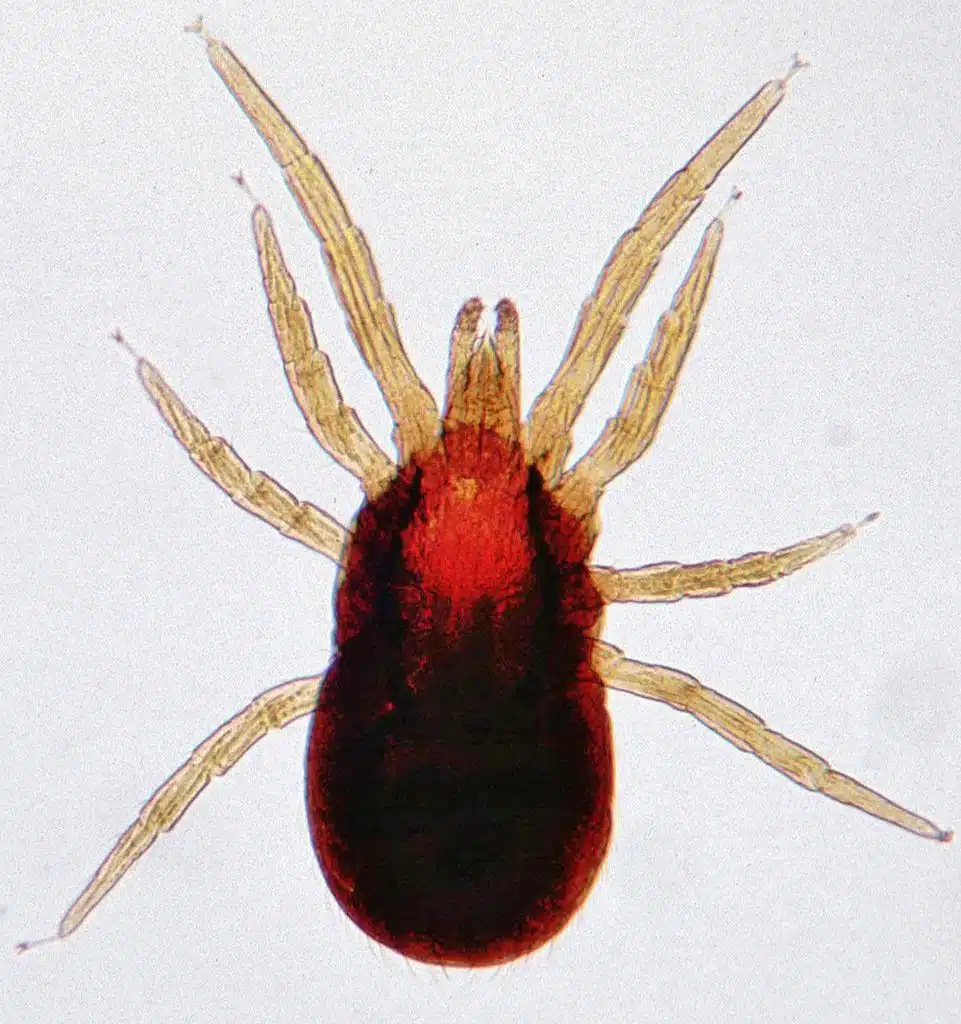
Bird mites are a type of small bug that attaches themselves to a bird host. Pigeons and other birds carry and spread these mites.
The chances of having bird mites in a laptop are small for those working indoors. However, things might be different in the summer when working outdoors is possible.
Accidentally having these mites in your laptop doesn’t require any action as they eventually die without a host and a blood meal.
Bird mites are gray or white. They have 8 legs and they might have a few hairs on their dorsal side as well.
Some bird mites have a light grey color with dark gray markings or black dorsal markings.
4. Dust Mites
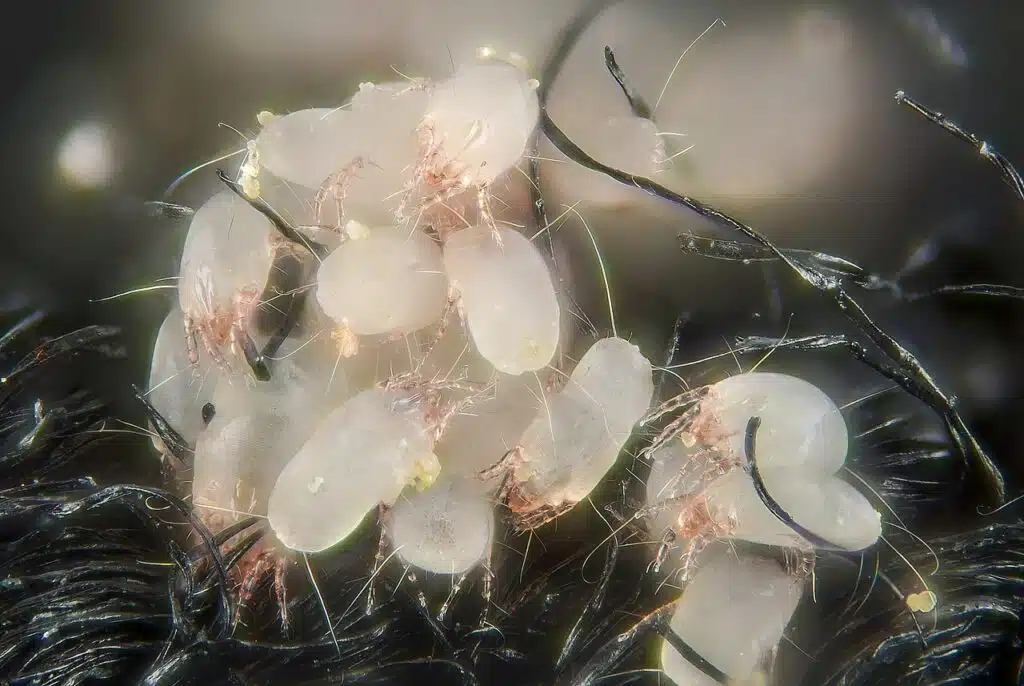
Dust mites thrive on human skin and in areas with dust. Dirty laptops and keyboards are a perfect environment for them to live in.
These mites aren’t found in the air as they settle on dust.
Mites of this family thrive in rooms with plenty of dust as well. One of the biggest issues with dust mites, unlike with other bugs, is the fact they trigger allergies and allergic reactions.
Dust mites settle on carpets, clothes, and other textile materials the most.
The reduced size of dust mites makes them impossible to detect in the house without multiple times magnification. A microscope is needed to see these bugs which resemble small spiders.
5. Bed Bugs
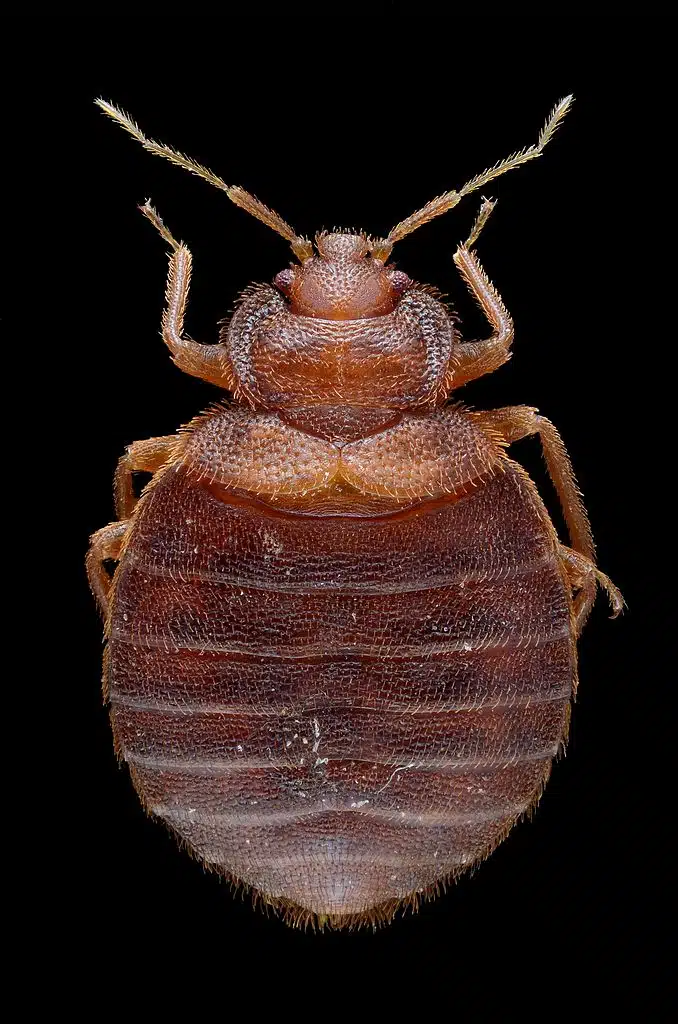
Bed bugs may end up on your desk or computer migrating from the carpet to the beds.
Feeding on animal and even human blood, these biting bugs are among the species which are visible to the naked eye.
Growing to a size between 4 and 7mm, bed bugs get into your home by direct contact with an animal or through a carrier person returning from a home infested with bed bugs.
6. Aphids
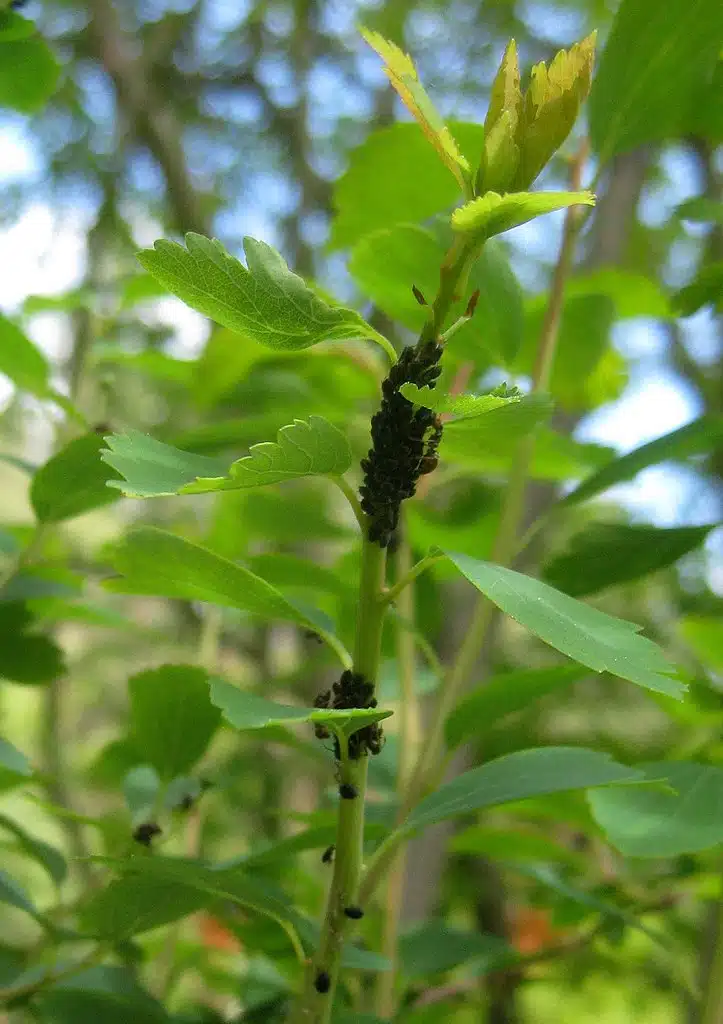
Green, yellow, white, or black, aphids can sometimes make it into your computer attracted to warmth, typically at the end of the summer when they might get indoors.
Aphids survive on plants and legumes which can be a pest.
They cannot survive low temperatures at the end of the summer and the beginning of the fall, a time when they move indoors to seek warmth.
7. Ants
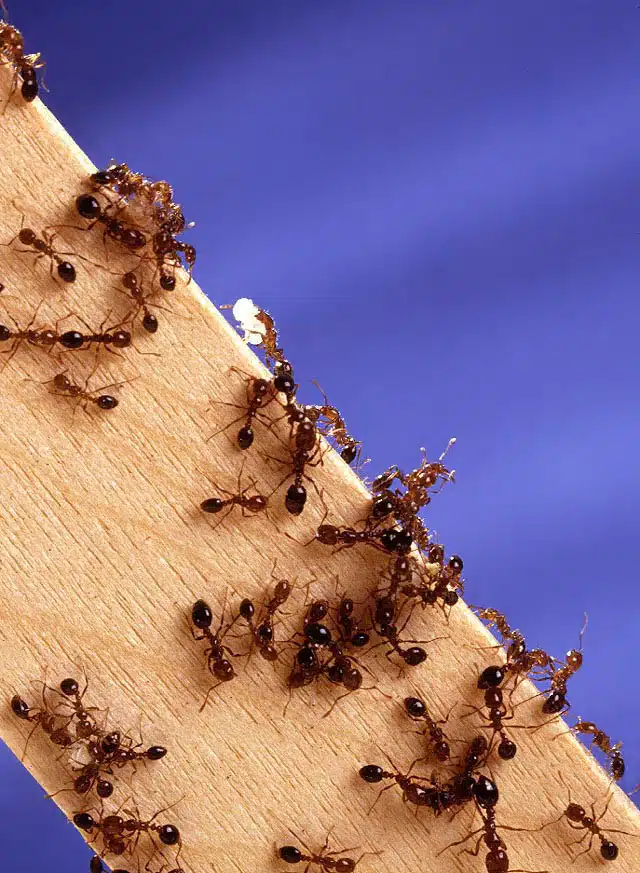
Protein, sugar, and fat are the main foods ants are interested in.
Bread crumbs on the keyboard are sufficient to attract various types of ants. Sugary drink spills on the keyboard are also enough to attract ants.
Leftover food in the office or around the desk attracts ants on the condition that it’s sweet. Fruit and candy are also some of the most common foods ants are interested in.
Ants come in different sizes and colors. Most ants are smaller than 1 inch and some of the smallest ants can measure only 0.10 inches.
8. Booklice
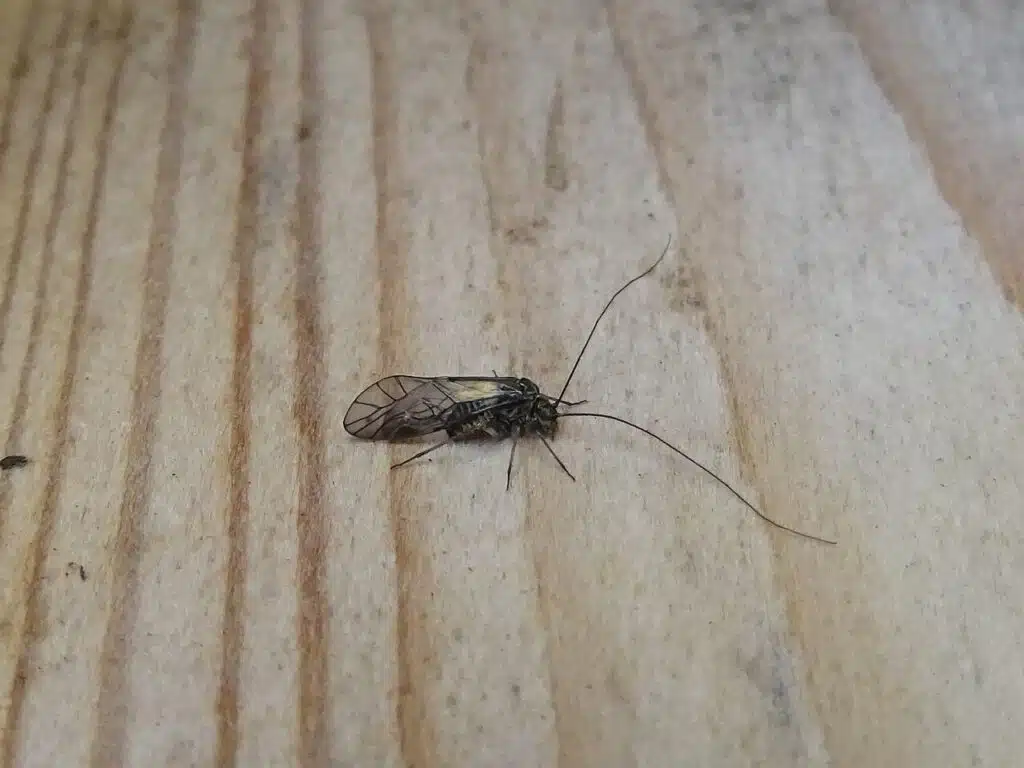
Booklice are some of the bugs in homes that can make it into laptops and stay there since they have a varied diet.
They can eat and survive on mold, just like mold mites. They also eat fungi, bread crumbs, and insects.
Eliminating these bugs is based on eliminating all of the foods in and around your computer.
9. Thrips
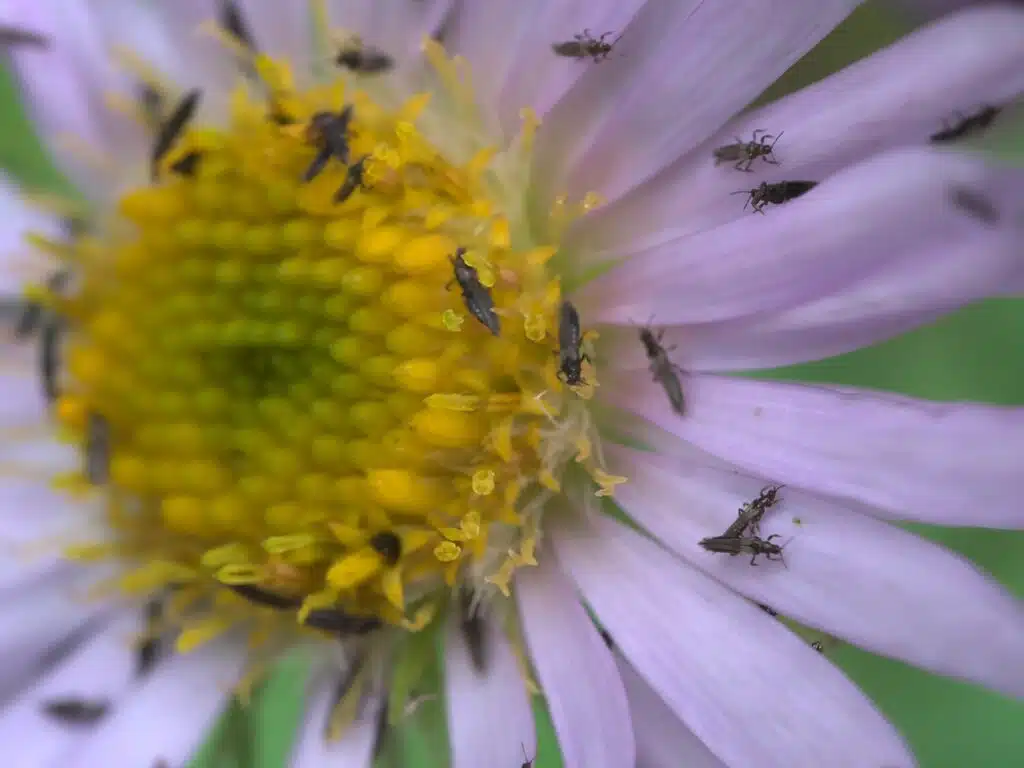
Thrips are small bugs that grow to 2mm.
A cylindrical-shaped species, thrips are present in some homes with plants in pots. They eat pollen, plants, and even fruit.
Thrips can fly, but not very far. This is why plants next to the desk are among the most probable source of thrips in your laptop.
10. Cockroaches
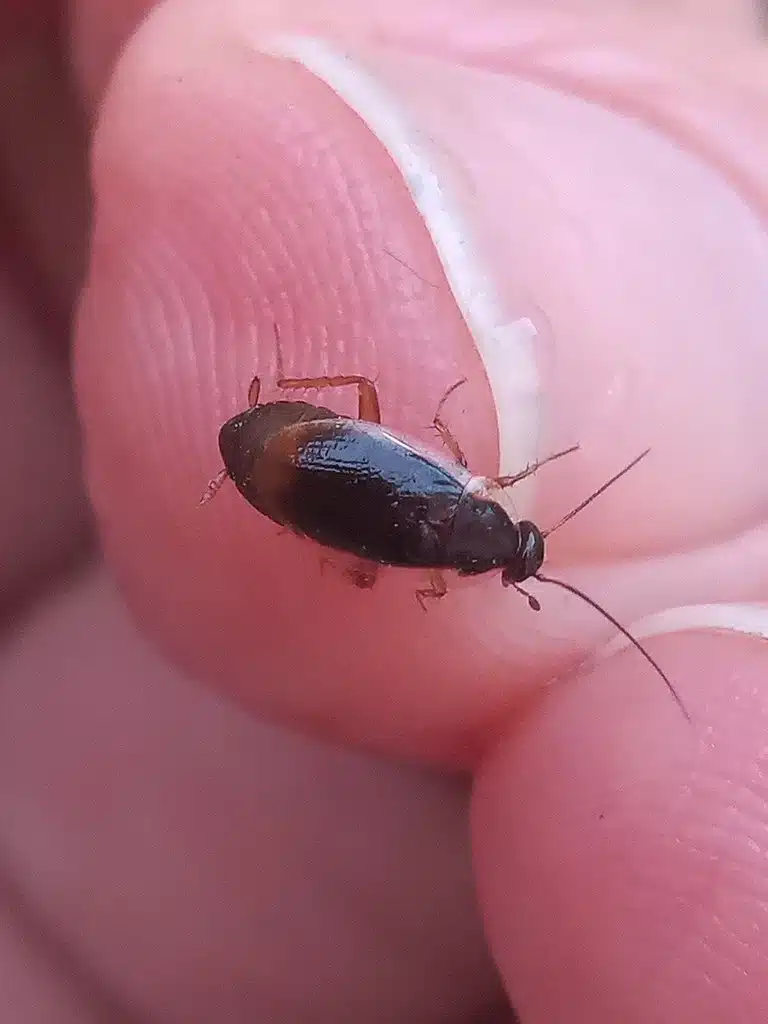
Cockroaches can live exclusively in homes. They feed on food traces and organic materials around the house.
Some of the most common types of cockroaches in homes are American cockroaches. These roaches love warmth and humidity. They can nest in laptops and computers at night as nocturnal bugs.
11. Springtails
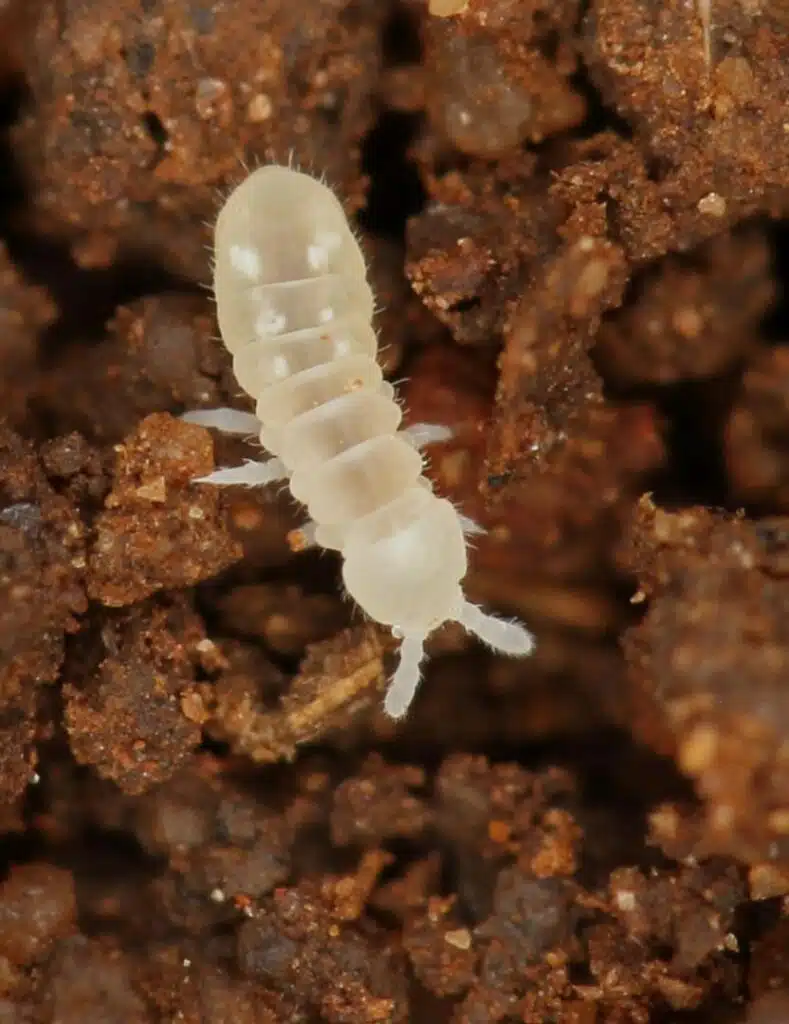
Mold and mildew are among the first reasons for springtails to exist in your laptop.
Decomposing plants, paper, and other foods are also considered by this jumping bug.
The presence of high moisture in your home is a requirement for springtails to survive, alongside having enough food.
Springtails are normally dark. They can have a dark brown color or they can also be black which means they are easier to spot on bright computer components and laptops.
Ways to Remove Bugs in Your Laptop
Removing bugs from laptops properly may require inspecting the computer properly and even taking it apart.
Take the laptop apart
One of the first steps to consider is to take the laptop apart. Bugs can get deep into the components and thorough cleaning might require deep cleaning.
Make sure your laptop or computer isn’t under warranty before taking it apart.
You can inspect basic components with a magnifying glass for bugs and bug eggs.
Use compressed air to spray bugs out
Cans of compressed air can be used to clear bugs and their eggs. Most small bugs and even smaller bugs can be cleaned with compressed air cans.
Alternatively, you can consider clearing bugs out of the laptop with a compressed air can without taking it apart.
This doesn’t remove all bugs and their eggs, on the other hand.
Use a vacuum cleaner to suck bugs out
Properly vacuuming the laptop and its components are the next step after the laptop is taken apart.
You might find that dust buildup in the laptop apart from bugs.
Dust is just as bad for your laptop’s components as it leads to overheating and poor ventilation issues.
Let the laptop dry in direct sunlight
Mold might be almost impossible to clear from affected laptop components completely.
One of the ways you can clear mold away is by allowing your laptop to dry in direct sunlight, probably for a few days.
A good method involves placing your laptop on the dashboard of your car and to leave it inside during the hot summer days. The combined heat of the car and direct sunlight on the laptop might clear and kill mold.
Clean your home or your office space
Bugs in laptops signal other more common problems you need to address, such as having bugs in your house.
Cleaning the office room at home and the entire house is mandatory for clearing bugs.
At the office, you may ask your supervisor to call in a pest controller to eliminate bugs and the sources of bugs in the building.
Using bug spray frequently can also help reduce the risk of flying bugs coming from outdoors into the house.
Open windows and artificial lights can attract different bugs and flies which can then make their way into laptops.
Prevention techniques for bugs in laptops
Preventing techniques involve eliminating the factors which bugs like such as food traces and humidity.
Inspect plants for bugs when bringing them indoors
Plants can carry plenty of bugs, especially when you first bring them indoors. Many types of flowers and plants you have indoors attract bugs that can fly, jump, or crawl into laptops and computers.
Properly checking plants and potted plant soil before being brought home is mandatory to reduce the risks of carrying these bugs.
Practice regular cleaning in the area of the desk and the house
Frequently vacuuming and dusting the home and the area of the desk is recommended as a preventive measure.
Food traces tend to be the most problematic unless there are moisture problems in the house.
You need to properly vacuum the laptop and the computer, especially if you like to eat in front of a monitor.
Checking for dust inside the laptop or the computer helps as well. You can use compressed air cans to eliminate dust buildup in your laptop at least once every few months.
Check the air quality and reduce moisture
Moisture favors almost all of the bugs that can live in your laptops, such as dust mites and booklice.
Reducing moist levels at home or the office is a mandatory preventive measure to keep these bugs away.
One of the methods you can consider is purchasing a dehumidifier. It allows you to control the exact moisture levels in a room.
More severe humidity problems such as undetected water leaks cannot be fixed by using a dehumidifier. Make sure to call a professional if humidity levels persist after using a dehumidifier for a few days.
Another way of dealing with bugs in laptops is to simply leave them alone. Most die inside the laptop without food. Since food crumbs are more likely to be on the laptop than inside, this is also the place bugs can ants can be found in most cases.